As a brand with a social media presence, criticism and negative comments are the norm rather than the exception. With thousands of customers connected to your social media accounts, negative comments are unavoidable.
Whether it’s a dissatisfied customer or the victim of a misunderstanding, how you handle these negative comments largely determines your online credibility.
Famous and established consumer brands worldwide have led the way in dealing with such negative comments.
By following in their footsteps, we can learn how to respond and act towards negative sentiments before it takes a serious toll on your online reputation.
To boost your review management efforts, we’ll also take a quick look at a few of the best review management tools that make your work easier.
How to handle negative comments on social media?
Step 1. Don’t ignore negative comments
The worst thing you can do for your brand is to ignore negative comments. It will give an angry client another reason to dislike your brand.
You should reply to every comment, whether it’s positive, negative, or neutral. Maintaining public relations is a must for brand building. It helps you connect better with your followers. Monitoring each mention and comment is necessary using social media tools like Agorapulse, SocialPilot, etc. Agorapulse’s pricing structure moves a bit to the higher side with some other usability cons. Here’s a list of Agorapulse alternatives you might want to have a look at.
If you run a business and put your heart and soul into it, it might be challenging for you to deal with the negativity. But, you have to handle it strategically. Otherwise, angry customers will write a bunch of new bad comments to harm your brand.

Here Selina, a popular beach hostel, took sincere feedback from its annoyed customer to provide better service.
Step 2. Apologize sincerely
“The customer is always right.” Even if you disagree with the customer’s point of view, you should still say sorry. This is the first step to resolve the conflict.
If your company was involved in a media scandal and has got dozens of negative news articles, comments, and reviews, a representative of your company must give a public apology. You should publish a post on behalf of the CEO or founder of the company that says, “Sorry for the unfortunate error.”
Here is an example of such an apology post.

Here is how Donatella Versace apologized for a T-shirt design that demonstrated disrespect for China’s National Sovereignty.
Step 3. Don’t make false promises
Don’t promise to replace the product or return the money just because your customer is unhappy if that’s not your usual practice. Analyze the problem first. And then explain to your customer how you can fix the situation.

Take a look at the following example. When Starbucks gets a negative comment on social media, it doesn’t rush to offer free coffee or any rewards as an apology. It asks the customer to reach out to customer service to find out who is wrong and who is right.
Step 4. Be polite
When it comes to negative sentiments and rude comments, it’s not that easy to keep calm. But you must be polite to save your brand.
Avoid using words at all costs, even if your customers use them. In any case, it will not help you to fix the situation.
Because, if your loyal customers see that you are rude to other customers, they will change their opinions about your company. So please, hide your real emotions, and make your replies as polite and friendly as possible.
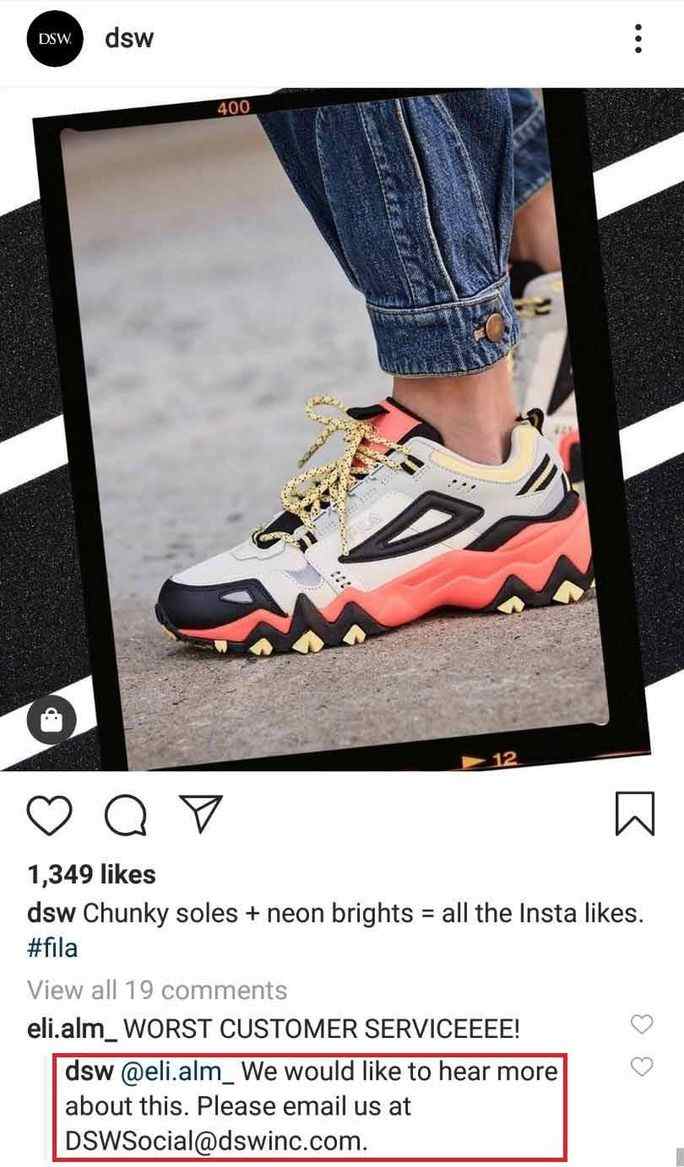
Here’s how DSW gracefully handled a negative comment about their customer service by being responsive and providing help.
Step 5. Take it out of the spotlight
To resolve the conflict, shift the conversation from social media to another place. Ask the customer to write you an email, direct message, or call customer support.
Don’t start battling with words in the comment thread. If customers are frustrated, they will write dozens of replies that show a negative attitude towards your brand. So, if you want to save your brand’s image, you should discuss the problem one-to-one.

Delta Air Lines avoided a social insult with a diplomatic response to one of their troubled passengers.
Step 6. Personalize your Message
Customers don’t want automated replies. So try to personalize your message and show empathy. Show that you care about your customers. Take a look at the following screenshot.
Tell me: What do you think? Are these messages automated or written by real people?
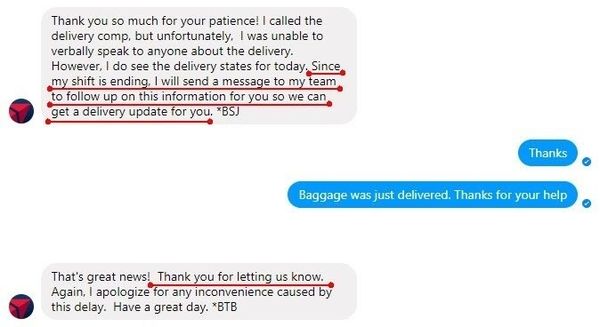
Delta Air Lines’ messages are written personally and are not automated. This shows that the company really cares about its customers and wants to help genuinely.
Step 7. Reply instantly
Don’t make an angry customer wait for your reply. Respond to negative comments within two hours.
Otherwise, your customers might think you are ignoring them. And, even if you put efforts into conflict resolution, no one will appreciate that.
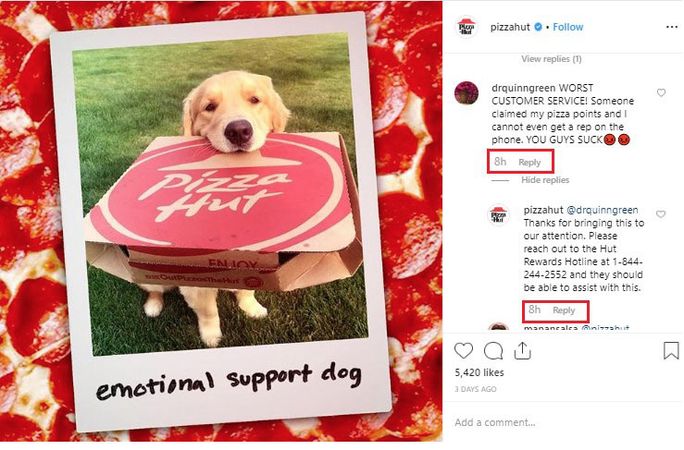
Pizzahut always ensures to address the concerns of their customers instantly being a responsive business.
Step 8. Explain yourself
One of the biggest mistakes companies make is that they do not give explanations to their customers. And as a result, the customers feel frustrated. You should always explain what exactly caused the problem and what your company did to resolve it. Show how much effort your company has put into making the customers satisfied. This will help you get positive results.
Besides, it is also important to explain to your followers that every issue they face is not the fault of the company. For instance, if an airline cancels a flight due to bad weather conditions. The passengers should not blame the airline for being late.
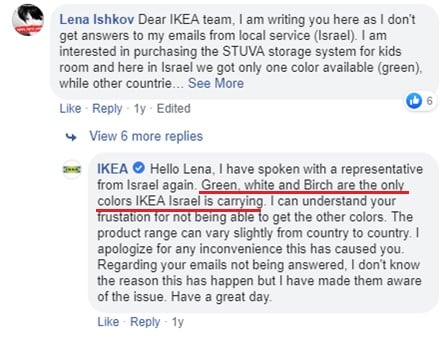
To know how to communicate with shoppers in the right way, look through IKEA’s account on Facebook. Every time customers put negative comments or ask why they can’t buy this or that item, or why the delivery is late, the company provides comprehensive answers.
Facebook is the platform that yields maximum exposure. So it is crucial that you hear your customers out by enabling page reviews and replying to each of them. So how to tackle this colossal task?
A social media management tool like SocialPilot is the way to go. You can see and reply to reviews and comments from multiple Facebook pages from a single social inbox without wasting any time. This helps you engage efficiently and win the audience’s trust as a brand.
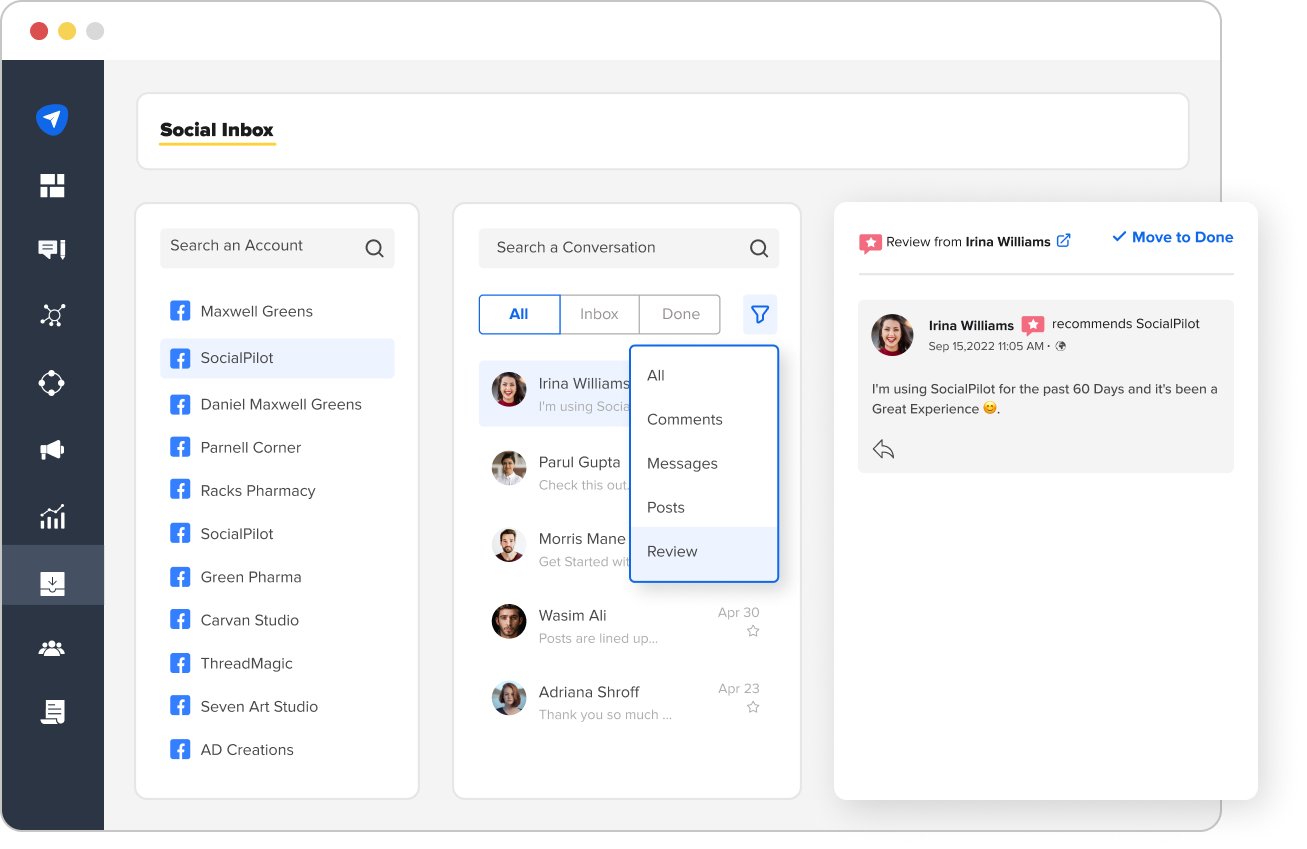
Step 9. Learn from your mistakes
Everyone makes mistakes. If your company has made a mistake, don’t panic. You can always find a way to fix it.
You should consider negative comments as a source of information. Read every comment to find out what exactly your customers don’t like about your products or your corporate policy. It will help you find a way to improve your products and take your business to the next level.
Once the issue is detected, you should make a plan on how to fix it. “Admit your mistake and tell your customers what specific actions you will take to resolve the conflict. You should show that you care about your customers to make them trust your brand again”, says Kristina Brush, social media manager at GrabMyEssay.

Givenchy clarified in a public post that it rectified its mistakes for inappropriate t-shirt designs and apologized for hurting the sentiments of the Chinese community.
Step 10. Generate positive comments
It’s impossible to avoid negative comments on social media. But it’s possible to minimize their impact on the brand image.
Can you guess the best way to lessen that impact?
Generate more positive reviews, and they will outshine the bad ones.
Here is how it works. If you get 20 negative comments and ten positive comments, it will hurt your business a lot. But if you get 20 negative comments and 100 positive comments, it will not affect your brand that much.
So, how can you get more positive comments?
Here are a few essential rules to follow:
- Always strive to create engaging social media content to boost engagement and get more comments.
- Reply to every positive or neutral comment. Try to develop a relationship with your loyal customers.
- Use humor. It’s a perfect ice-breaker.

Look at this humor thread Royal Dutch Airlines happened to create with one of its followers. Such responses make you an approachable and people-loving brand.
Top 5 tools that can help the user in Review Management
Now let’s talk about online marketing tools you should use to manage negative comments and reviews.
1. Brandwatch
Use this tool to monitor mentions of your brand on the web. Take advantage of analytical features to understand customer perception, spot changes in sentiment, and measure brand exposure in real-time.
2. Google Alerts
If you are looking for a free tool with basic features that allows monitoring mentions, Google Alerts is a good option to consider. You can use it to watch for negative comments on social media as well as see what reputable sites say about your rivals.
3. Ahref
Ahref is an all-in-one SEO tool that can be used for brand monitoring. Alerts by Ahref work more effectively than alerts by Google. So, if you don’t have money constraints, I would recommend you to use this tool.
4. SocialPilot
This tool is a perfect solution for agencies and social media professionals. SocialPilot allows you to manage social media scheduling and publishing from one place. It also helps in tracking positive and negative reviews better.
5. Studicus
If you find it difficult to write replies to negative comments, don’t hesitate to use this online service. Professional writers from Studicus can help you to manage negative reviews effectively.
Wrapping it up
Remember that negative comments are not a big problem if managed in the right way. Multinational companies get dozens of bad reviews daily, but it does not affect their revenue. The secret of their success is simple. They know how to communicate with angry customers.
So, if you want your company to succeed, keep a watch on what people are talking about your brand on social media. React to all the comments you get. Be attentive to the problems of your customers.
And nothing will hold you back from achieving the results you have been dreaming about.


